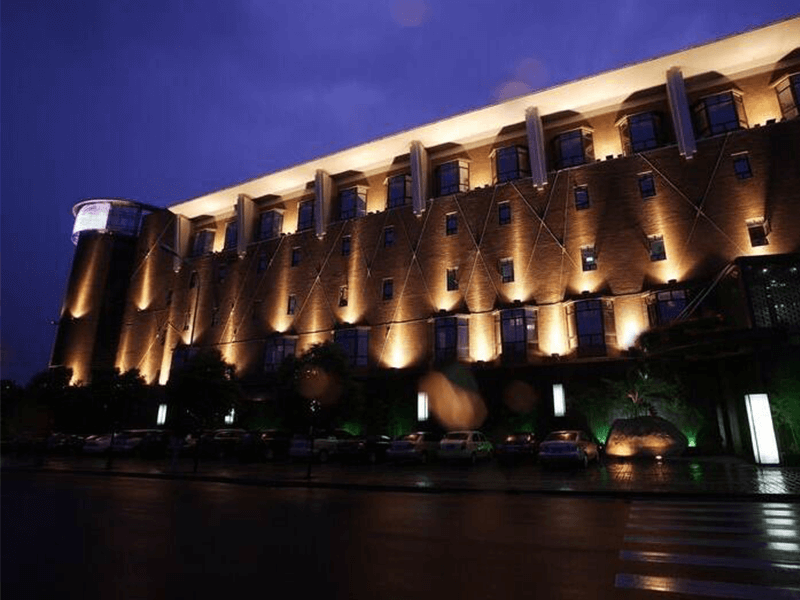In the intricate world of LED roadway lighting, achieving uniform and consistent light distribution across expansive stretches of roadways is a paramount challenge that necessitates a symphony of engineering precision and innovative solutions. This endeavor goes beyond the mere provision of light; it is a meticulous orchestration that enhances safety, visual comfort, and navigability. Let us delve into the comprehensive solutions that ensure the luminous canvas of roadways is painted with consistency and efficacy.
1. Luminaire Placement Strategies: Calculated Geometry for Optimal Illumination
At the core of achieving consistent light distribution lies the strategic placement of luminaires. A meticulous analysis of the roadway’s geometry, including curves, intersections, and varying elevations, guides the placement strategy. Through a discerning comprehension of the distinctive attributes of each segment, lighting designers can strategically place luminaires, guaranteeing that each section attains the designated luminous intensity. This calculated geometry transforms uneven terrain into a smoothly illuminated thoroughfare, minimizing shadows and optimizing visibility.
2. Utilization of Advanced Optics: Harnessing Precision in Beam Control
Integrating advanced optics within LED luminaires is a technological frontier in ensuring consistent light distribution. Optics, such as lenses and reflectors, are engineered to control the direction and spread of light. By harnessing the power of precision optics, designers can accurately sculpt the luminous pattern, directing light precisely where needed. This mitigates the risk of over-illuminated and shadowed areas and reduces glare, fostering a visually comfortable and uniformly lit environment.
3. Adaptive Illumination Systems: Real-Time Adjustments for Varied Conditions
In the dynamic landscape of roadways, integrating adaptive illumination systems emerges as a solution that responds dynamically to varying conditions. These systems, often equipped with sensors and intelligent controls, modulate the intensity and pattern of light in real time. During low-traffic periods, luminaires can dim to conserve energy, while in high-traffic scenarios, the brilliance amplifies for enhanced visibility. This adaptive approach ensures that the luminous landscape is in constant harmony with the changing dynamics of traffic, weather, and time of day, thereby maintaining a consistent illumination level.
4. Smart Lighting Networks: Coordinated Illumination Across Segments
Deploying intelligent lighting networks introduces a level of coordination beyond individual luminaire performance. These interconnected systems communicate seamlessly, allowing for synchronized adjustments across multiple luminaires. This networked intelligence enables a cohesive and uniform approach to illumination, ensuring that adjacent segments complement each other in brightness and color temperature. Intelligent lighting networks pave the way for a seamlessly coordinated luminous tapestry that transcends the limitations of isolated fixtures.
5. Customization Through Beam Angle Control: Tailoring Light Distribution
Customizing light distribution through precise control of beam angles adds a layer of sophistication to achieving consistency. By adjusting the spread and focus of light, designers can tailor illumination to specific requirements. Narrow beam angles may be employed for long stretches of roadway, while wider angles enhance visibility at intersections or pedestrian crossings. This customization through beam angle control allows for an adaptive and tailored approach that aligns with the diverse characteristics of different roadway segments.
6. Comprehensive Lighting Design Software: Simulating and Optimizing Performance
The emergence of sophisticated lighting design software allows designers to simulate and enhance the performance of installations for roadway lighting. These tools allow for intricate modeling of luminaires, considering factors such as photometric, color temperature, and distribution patterns. Through virtual simulations, designers can fine-tune luminaire placement, optics, and settings to achieve the desired level of consistent light distribution. This proactive approach enables precision in design before physical implementation, reducing the need for adjustments post-installation.
Solutions for consistent light distribution in LED roadway lighting epitomize a holistic and technologically advanced approach. It is an orchestration that combines strategic placement, advanced optics, adaptability, coordination, customization, and the power of simulation. As roadways transform into beacons of precision-engineered illumination, these solutions stand as a testament to the commitment to safety, efficiency, and visual harmony on the nocturnal thoroughfares of our urban landscapes.
